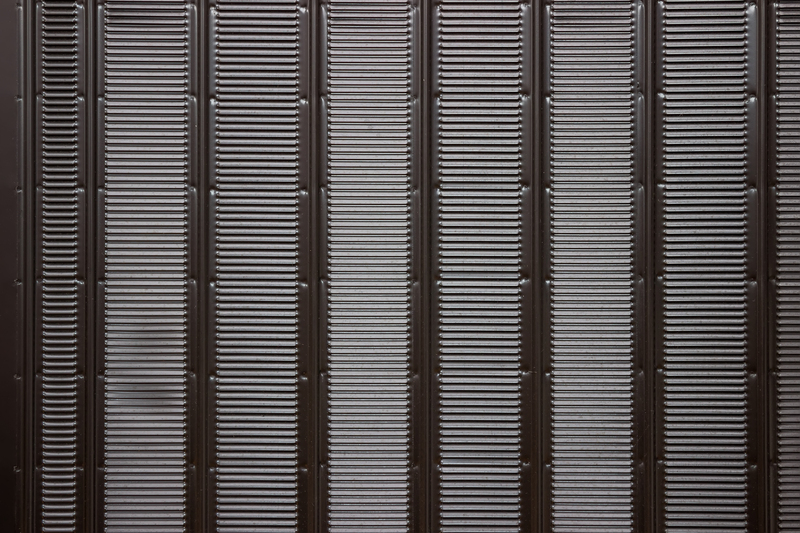From Clutter to Clarity: Cleaning Burnt Stovetops
Posted on 07/10/2025
A sparkling clean kitchen doesn't just reflect your love for food, it also speaks volumes about your home's hygiene. There's nothing more distracting or unappetizing than a burnt stovetop, marked by stubborn stains and greasy residues. If you're exasperated by persistent stovetop messes and are searching for an effective burnt oven cleaning solution, you're in the right place. This comprehensive guide will help you turn culinary chaos into domestic serenity, transforming your cluttered, burnt stovetop into a gleaming centerpiece.
Why Do Burnt Stovetops Need Special Attention?
A burnt stovetop is more than just a cosmetic flaw. Here's why you need to address burnt-on stains and grime promptly:
- Fire Hazard: Accumulated residue can ignite, risking kitchen fires.
- Health Concerns: Bacteria thrives in greasy, burnt-on messes.
- Appliance Lifespan: Grime can corrode surfaces or block gas burners.
- Culinary Quality: Odors and flavors from previous spills can affect new dishes.
A clean stovetop not only boosts hygiene but also ensures your cooking remains top-notch. Mastering burnt stovetop cleaning ensures safety, flavor, and peace of mind.

Understanding Burnt Stovetop Messes: Identifying Your Surface
Knowing your stovetop's material is crucial for picking the right cleaning method. Let's look at common types:
- Gas Stovetops: Typically feature metal grates and drip pans over burners.
- Electric Coil Stovetops: Feature removable coils and metal trays.
- Glass or Ceramic Stovetops: Flat, smooth surfaces that scratch easily.
- Induction Stovetops: Smooth like glass, but sometimes with specific manufacturer recommendations for cleaning agents.
Always check your appliance's manual before starting--using harsh chemicals or abrasive scrubbers on delicate surfaces can lead to scratches or permanent damage.
Essential Tools and Supplies for Cleaning Burnt Stovetops
Arming yourself with the right tools can mean the difference between *frustrating scrubbing* and a satisfying, efficient clean. Here's what you'll need for most stovetop cleaning jobs:
- Soft sponges or microfiber cloths
- Baking soda (proven, natural cleaner)
- White vinegar
- Lemon juice
- Plastic scraper (especially for glass tops)
- Non-abrasive scrub pads
- Dish soap
- Rubbing alcohol (optional for disinfecting)
- Gloves to protect your skin from harsh agents and grime
*For electric or induction stovetops, avoid excess water, which can seep into electrical components.*
Step-By-Step Guide: How to Clean a Burnt Stovetop Effectively
Preparation: Safety and Setup
- Ensure the stovetop is completely cool before cleaning.
- For electric or gas stoves, unplug or turn off the power supply for extra safety.
- Remove grates, drip pans, or coils and set them aside for separate cleaning.
Cleaning Burnt Gas Stovetops
- Remove Grates and Burner Caps: Soak them in hot, soapy water to loosen burnt-on food.
- Loosen Surface Gunk: Use a damp cloth to lift away loose debris from the stovetop.
- Apply a Baking Soda Paste: Mix baking soda with a little water and spread it on burnt areas. Let it sit for 15-20 minutes.
- Scrub Gently: Use a non-abrasive sponge to scrub away residue without scratching the surface.
- Use Vinegar for Stubborn Spots: Spray white vinegar over the baking soda paste--this fizzing reaction helps break down tough, burnt stains. Leave it for another 10-15 minutes, then wipe clean.
- Rinse and Polish: Wipe down the entire surface with a damp microfiber cloth, then dry with a clean towel.
- Clean Grates and Burners: Use a brush or non-abrasive pad to scrub grates and burner caps, rinse, and dry before replacing.
Cleaning Electric Stovetops
- Remove Coils: Lift out coils (if removable), gently wipe them with a damp cloth, and avoid submerging connections in water.
- Address Drip Pans: Soak pans in hot, soapy water or a vinegar-baking soda mixture.
- Apply Cleaning Paste: Use a baking soda paste directly on burnt residues on the metal drip pans; let soak for 30 minutes.
- Scrape as Needed: Carefully use a plastic scraper for stubborn, burnt-on gunk.
- Final Wipe: Rinse everything well, dry, and reassemble.
How to Clean Burnt Glass or Ceramic Stovetops
- Use a Specialty Cleaner or Baking Soda: Many manufacturers sell specific products for glass stovetops, but baking soda is a gentle, natural alternative.
- Spread the Paste: Make a paste of water and baking soda, apply generously to burnt spots.
- Steam Boost (Optional): Lay a hot, damp towel over the paste for 10 minutes to loosen stubborn stains.
- Scrape Carefully: Slide a plastic scraper at a 45-degree angle to lift off burnt gunk--never use metal scrapers!
- Polish Off: Wipe with a damp, clean microfiber cloth. Buff dry for a streak-free shine.
Ceramic surfaces require a delicate touch to avoid scratches--always use non-abrasive materials!
Home Remedies for Burnt Stovetop Cleaning
Natural Solutions for Stubborn Stove Grime
- Lemon and Salt Scrub: Halve a lemon, dip it in salt, and rub it across stubborn stains. The acidity cuts through grease, while the salt acts as a mild abrasive.
- Vinegar Spray: Mix equal parts white vinegar and water in a spray bottle. Spritz on tough spots and let sit before wiping away.
- Baking Soda & Hydrogen Peroxide: For *extremely tough* burnt-on mess, make a paste with baking soda and a splash of hydrogen peroxide. Spread, let sit, and scrub carefully.
These DIY stovetop cleaning solutions use readily available household items--making them safe, cost-effective, and eco-friendly!
When to Use Commercial Cleaners
If homemade remedies don't cut it, commercial stovetop cleaners can power through stubborn stains. However, always select a product suited to your stove material. Avoid bleach for colored or delicate surfaces, and remember to:
- Read the label and instructions carefully.
- Ensure good ventilation while using strong chemicals.
- Wear protective gloves.
Pro tip: Soak especially tough, burnt stains overnight with cleaner or paste covered by plastic wrap to prevent drying out.
Prevention: Keep Your Stovetop Sparkling
Easy Habits for a Cleaner Stovetop
- Wipe Splashes Immediately: The longer spills sit, the harder they are to remove.
- Use Pan Lids: Prevent splatter when frying or simmering sauces.
- Deep Clean Weekly: Add a stovetop wipe-down to your routine cleaning checklist.
- Stovetop Protectors: These silicone mats can be laid over burners and are dishwasher safe. A simple way to avoid burnt-on food residues.
- Inspect Burners Regularly: Clean hard-to-reach spots under grates or burners to prevent hidden buildup.
*A few seconds daily can save hours of scrubbing later--embrace the habit for lasting kitchen clarity!*
Frequently Asked Questions about Cleaning Burnt Stovetops
Can I use steel wool on my stovetop?
It's best to avoid steel wool on most stovetops. While it can be effective for some metal grates, it scratches glass, ceramic, and high-gloss surfaces. Opt for a non-abrasive pad or a plastic scraper.
What's the quickest way to get rid of a burnt mark?
Spread a paste of baking soda and water on the mark, let it sit for 15 minutes, then wipe gently. For stubborn marks, spray with vinegar, allow it to fizz, and scrub lightly.
Are there any stovetop materials I should be extra careful with?
Yes! Glass, ceramic, and induction stovetops can scratch or etch easily. Always check manufacturer care instructions and avoid sharp tools or powders.
How can I remove burnt milk or sugar?
Soak the area with hot, soapy water, then apply a baking soda paste. For glass covers, lay a hot, damp towel over the area to soften the caramelized residue before gently scraping with a plastic scraper.
Can I use oven cleaner on my stovetop?
Oven cleaners are often too harsh for stovetops, especially glass or ceramic ones. Stick to gentler stove-specific cleaners or DIY solutions.

Pro Tips for Long-Lasting Clarity
- Always clean spills as soon as possible--prevention makes everything easier.
- Buff with a dry microfiber at the end for a streak-free finish.
- Never let water seep into electronics or gas components.
- If in doubt, consult your stovetop's manual for recommended cleaning agents and tools.
Conclusion: From Cluttered to Clean--Every Burnt Stovetop Has Hope
In the journey from clutter to clarity, cleaning a burnt stovetop is a transformative act that uplifts your entire kitchen space. With the right tools, methods, and a little perseverance, even the grimiest, most burnt food residues can be removed, restoring your stovetop's beauty and function.
Take pride in your kitchen; remember, a clean stovetop is a sign of care, passion, and a welcoming environment. Armed with these tips, you now have the knowledge and confidence to tackle even the toughest burnt stovetop cleaning challenges--ensuring kitchen cleanliness that shines from clutter to clarity!




